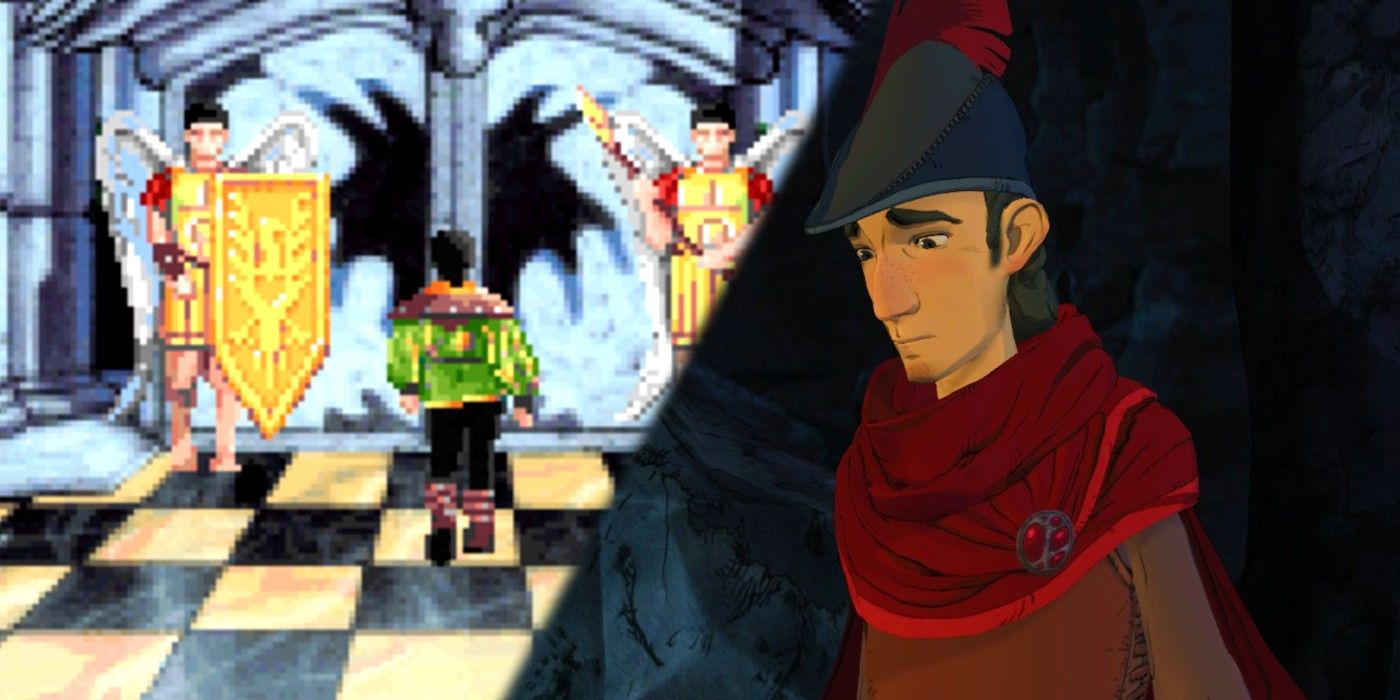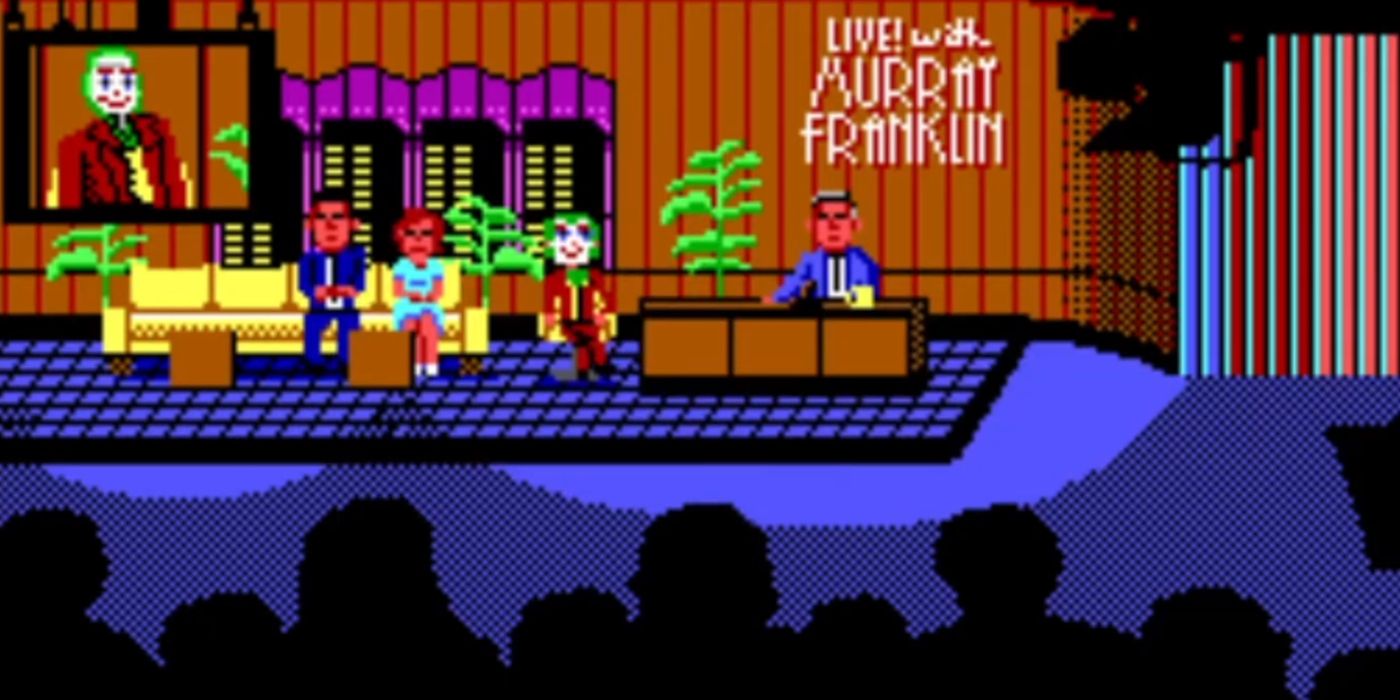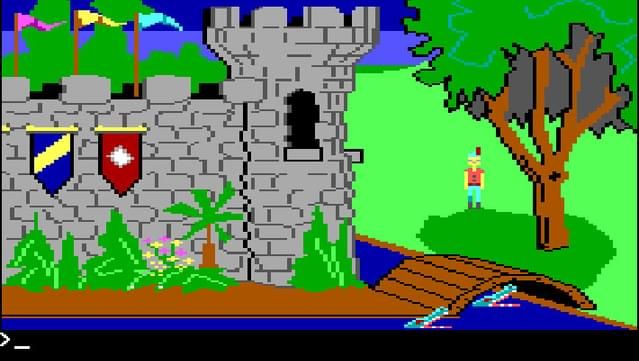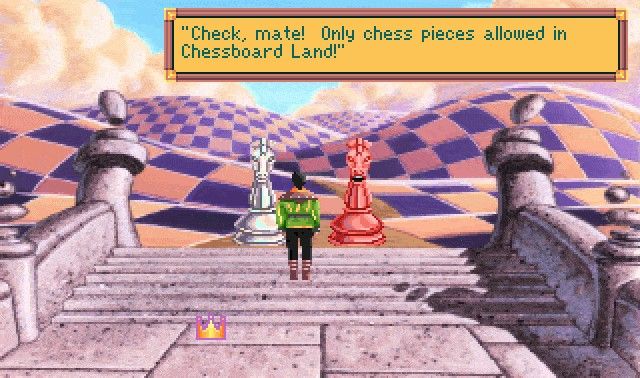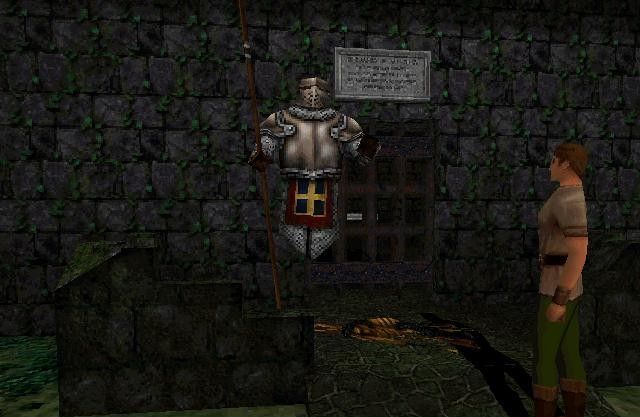The King's Quest franchise is one of the earliest series in the adventure game genre. First launched in 1984, the series started as a text-based adventure. From there, designer Roberta Williams created an 8-game franchise for Sierra Entertainment that encapsulated early 90’s PC gaming. But, just like any kingdom, its meteoric rise to gaming prominence was followed by a slow decline and eventual demise.
The King's Quest series is set in the kingdom of Daventry, a graphic kingdom plagued by witches, dragons and talking owls. In the first game, the player plays as Sir Grahame, and is given a quest to find three treasures which results in the knight becoming the King of Daventry. In late 1984, the game was re-released, and the knight’s name was changed to Graham. The following games make up the exploits of King Graham’s rule, while navigating the graphic interface of PCs, NES, and Sega Master System.
As technology in the 90s evolved, so did the King's Quest series.By King's Quest V: Absence Makes the Heart Go Yonder the series had abandoned text-based controls and moved to a point-and-click interface. By 1998, the franchise was out of innovations. King's Quest: Mask of Eternity was the eighth in the series, and departed from traditional adventure game quests and focused more on combat, which fans disliked. It was the final nail in the coffin for developers Sierra On-Line, and the last game in the series.
The History of King's Quest, Explained
The series relaunched in 2015 with a game called King's Quest by Activision, and released on PC and console. Not directly a sequel, the game labeled itself a “re-imagining” of the previous titles some 32 years later. Told from the perspective of King Graham, the game references the original series, but changes the way most events happen for the player. It was released in six episodes released separately over 2015 and 2016. It received good reviews from critics, generally scoring in the 8-9/10 range.
King's Quest I was released in 1984 in a genre that was relatively new. Most adventure games of the time were text-based and displayed one static image. The player “played” the game by entering text commands below the screen. King's Quest was the first game to feature an interactive graphic display, complete with character models and scenery. Players were able to move around the setting and interact with it, and view changes on screen. The game even simulated depth perception, with the character able to walk in front of things and obscure them, or hide behind other objects. For this reason the game was tagged as the first “3D-animated” adventure games ever.
While it looks extremely primitive by today's standards, the text-based adventure game was relatively high-end at the time. It cost $700,000 to produce and took 18 months of development. It helped shift video games away from text-based controls of the day and towards a more user-friendly graphic interface.
The original game’s story sees Sir Graham tasked with finding three magical objects, before being crowned king of Daventry. One of the objects Graham finds is a magic mirror that is defended by a dragon. After defeating the dragon, or rather, embarrassing him, the player collects the mirror, which is vital for King Graham in subsequent games.
In the second game, King's Quest II:Romancing the Throne, King Graham quests to find a queen who is shown to him in the magical mirror. The game continues to use text input to solve puzzles, but a number of updates such as an intro cut scene and a vast soundtrack that includes both Tchaikovsky and Michael Jackson give the game a significant upgrade. The story is also expanded, and the game is more than just a treasure hunt, with Graham having relationships with several characters.
King's Quest III - V see King Graham become a family man. King's Quest III: To Heir Is Human sees a brand new main character, called Gwydion, be trapped by an evil wizard and break free by learning spells. A spellbook was included along with the game, which contributed to the game’s overall high level of difficulty. Eventually Gwydion finds out he is the long lost prince Alexander of Daventry, and that his sister Rosella the princess is in danger.He journeys home to save her, and returns to his father, King Graham. This title is one of the first ever to use what is now known as fast travel between stages.
1988’s King's Quest IV The Perils Of Rosella the player takes a spin as the princess, a rarity for early adventure games. Williams designed the game to be the first commercially available game to support sound cards. Princess Rosella made use of this technology by having 75 musical numbers in a beautiful score.
The fifth title in the series is King's Quest V:Absence Makes the Heart Go Yonder! King Graham goes out for a walk, only to have his Castle nabbed by an evil wizard. He goes on a journey to save it, while inadvertently introducing his son, Prince Alexander, to a beautiful woman. That tale ultimately makes up King's Quest VI: Heir Today, Gone Tomorrow, where the player plays as Alexander on a quest to find his own true love. These two games, launched in 1990 and ‘92 respectively, took players away from a text parser, and into the point-and-click era of PC gaming. King's Quest VII:The Princeless Bride featured two main characters, Queen Valanice and Princess Rosella, for the first time in the series They saved the kingdom again and Rosella found a prince to marry.
King's Quest: Mask of Eternity was a departure from the King's Quest formula released in 1998. Fans were upset that the game was structured more towards combat, and the art style was changed again. Many consider the final edition to be the low point in the series. All pitches for King's Quest IX were cancelled before production.
The 2015 reboot, produced by Odd Gentlemen and published by Activision, was released in six episodes between 2015-16, to critical acclaim. The episodes retold the story but did not stick to the original plot, giving players a fun new challenge. King Graham’s family got to rule Daventry once again with a brand new voice cast, and players loved the nostalgia and reworked control layout.
The iconic series deserved a reboot because of its incredible innovations, which give it a place in video game history. In fact, it placed 79th in Next Generation’s Top 100 games of all time, and was recently placed in the Video Game Hall of Fame. The reboot of the King's Quest series was good enough that new players were attracted, and old fans enjoyed a nostalgic ride.

